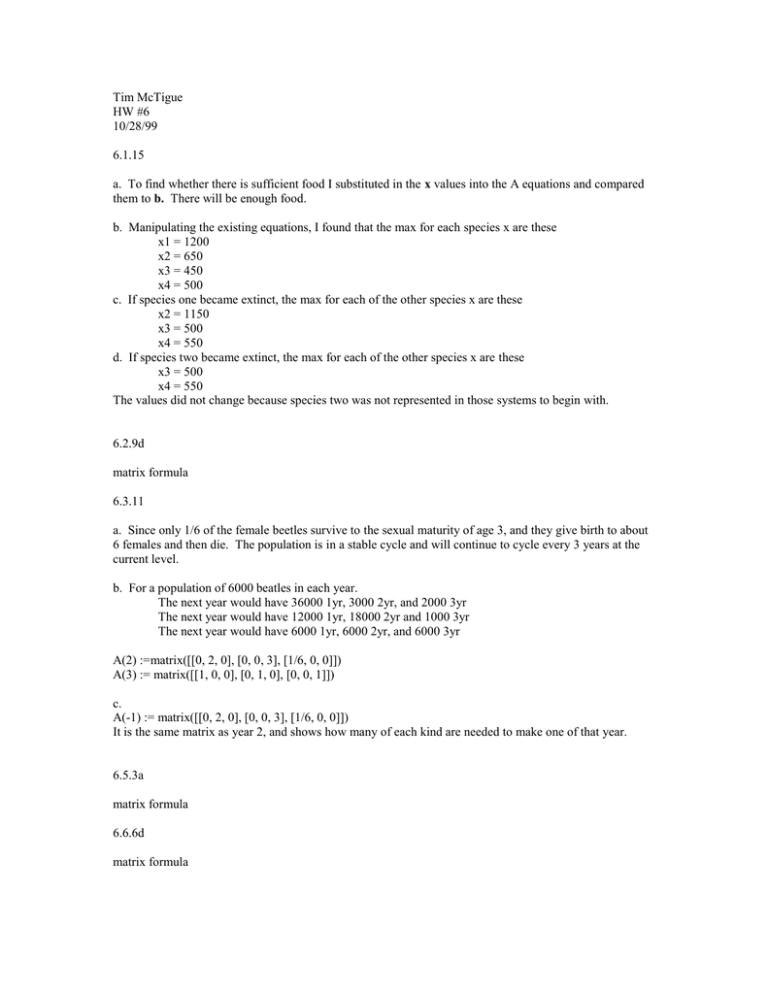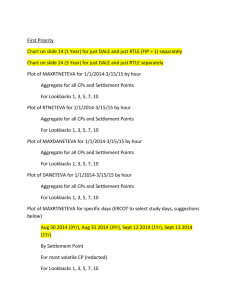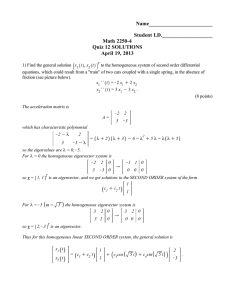Tim McTigue HW #6 10/28/99
advertisement

Tim McTigue HW #6 10/28/99 6.1.15 a. To find whether there is sufficient food I substituted in the x values into the A equations and compared them to b. There will be enough food. b. Manipulating the existing equations, I found that the max for each species x are these x1 = 1200 x2 = 650 x3 = 450 x4 = 500 c. If species one became extinct, the max for each of the other species x are these x2 = 1150 x3 = 500 x4 = 550 d. If species two became extinct, the max for each of the other species x are these x3 = 500 x4 = 550 The values did not change because species two was not represented in those systems to begin with. 6.2.9d matrix formula 6.3.11 a. Since only 1/6 of the female beetles survive to the sexual maturity of age 3, and they give birth to about 6 females and then die. The population is in a stable cycle and will continue to cycle every 3 years at the current level. b. For a population of 6000 beatles in each year. The next year would have 36000 1yr, 3000 2yr, and 2000 3yr The next year would have 12000 1yr, 18000 2yr and 1000 3yr The next year would have 6000 1yr, 6000 2yr, and 6000 3yr A(2) :=matrix([[0, 2, 0], [0, 0, 3], [1/6, 0, 0]]) A(3) := matrix([[1, 0, 0], [0, 1, 0], [0, 0, 1]]) c. A(-1) := matrix([[0, 2, 0], [0, 0, 3], [1/6, 0, 0]]) It is the same matrix as year 2, and shows how many of each kind are needed to make one of that year. 6.5.3a matrix formula 6.6.6d matrix formula

